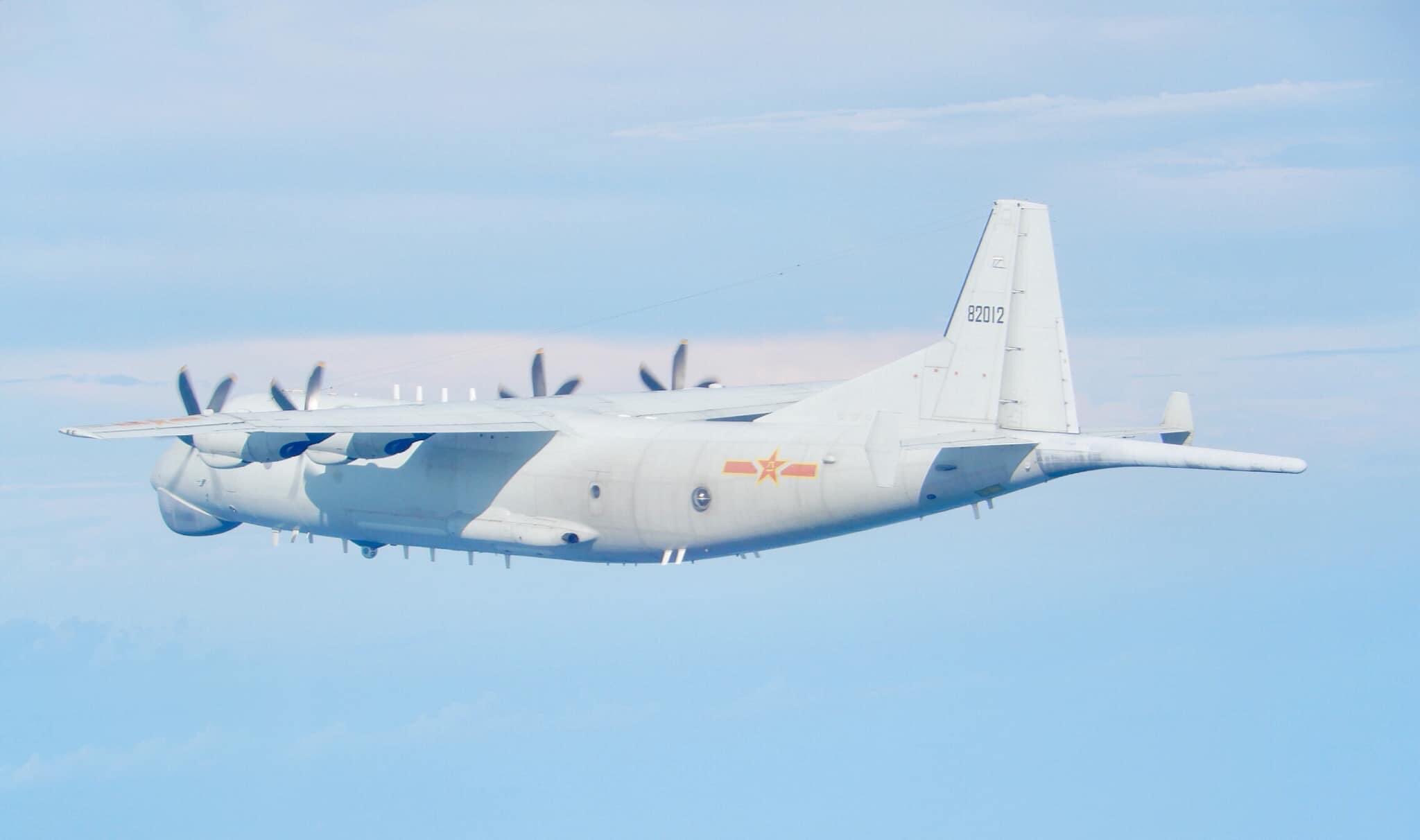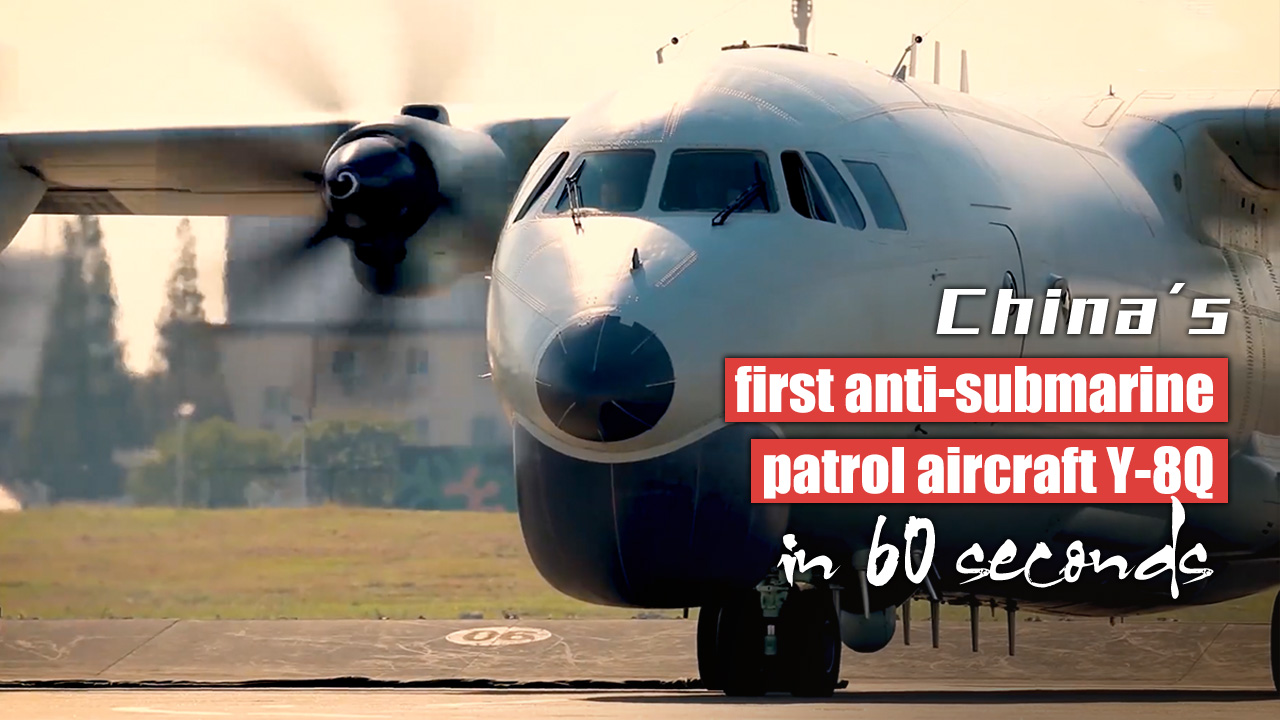Call it Chinese power projection, the country’s state-controlled CGTN news channel posted a 60-second video showing the Y-8Q anti-submarine warfare aircraft.
This development comes in the wake of deepening engagement between Taiwan and the US, and China’s enhanced belligerence against the self-governed island state.
The video of PLA Navy’s Y-8Q aircraft, also known as KQ-200, surfaced even as Taiwan claimed that at least 5 Chinese warplanes had entered its Air Defense Identification Zone (AIDZ) on November 24. This was the 23rd intrusion in November alone, as reported by Taiwan News.
The aircraft that entered the ADIZ included a Y-8 anti-submarine aircraft that the CGTN showed off in its video, apart from four J-16 fighters.
Since September 2020 when the PLA Air Force started regular intrusions into Taiwan’s airspace, the KQ-200 or the Y-8Q ASW aircraft has been involved in 70% of all sorties, according to an article written by Olli Pekka Suorsa, an assistant professor at Rabdan Academy in the UAE.

The aircraft has filled an important capability gap for the PLA Naval Air Force (PLANAF) since entering service with the Eastern Theater Command in 2018 and the Southern Theater Command later.
It allows the PLANAF to continuously monitor foreign submarine and surface ship activity at or near critical maritime chokepoints and sea lanes of communication along the First Island Chain.
With US warships sailing through the Taiwan Strait including the recent USS Milius to keep up with what it calls ‘Freedom of Navigation in the Indo-Pacific, China’s Y-8Q video could be seen as a signal to the US Navy as well as its allies in the region. USS Milius is understood to have crossed the Taiwan Strait 11 times this year, much to China’s disenchantment.
China strongly protested the USS Milius entering the strait, calling it a “deliberate attempt to disturb and undermine regional peace and security”, according to Foreign Ministry spokesperson Zhao Lijian.
In December last year, a Chinese PLA anti-submarine warfare aircraft was seen delivering a new sort of depth charge in a training exercise, displaying its capabilities to not only detect but also strike enemy submarines. The news of this exercise had come just a week after Taiwan announced the start of construction of its new submarine fleet.
China’s Anti-Submarine Warfare
The Y-8Q is China’s first fixed-wing anti-submarine patrol aircraft, developed and constructed indigenously. A variant of the Y-8 cargo plane, Y-8Q combines reconnaissance, analysis, and assault capabilities. It is mostly used to track and attack enemy submarines. For recognizing surfaced targets, it has an infrared detection system, charge-coupled device (CCD) cameras, and laser rangefinders.

The Y-8Q is said to feature the world’s most advanced magnetic anomaly detectors, which can detect demagnetized submarines underwater.
The Y-8Q has a surface search radar in the nose, an electro-optic payload under the fuselage, and a magnetic anomaly detector (MAD) at the tail. It has four sonobuoy deployment openings (AVIC’s SQ-4 and SQ-5), as well as a cargo bay that can carry anti-submarine grenades and torpedoes.
It is built on the Y-8 Category III Platform and is fitted with six-bladed WJ-6C turboprops. The Shaanxi Aircraft Corporation (SAC) manufactured the Y-8, a medium transport aircraft based on the Soviet An-12. The aircraft has a range of approximately 5,000 km and a patrol endurance of about 10 hours.
A recent analysis by Olli Pekka Suorsa suggests that the Chinese ASW aircraft fly over a certain area of interest in the northern part of the South China Sea. The area is roughly halfway between the major port city of Kaoshiung in mainland Taiwan and Pratas Island.
Two natural submarine interception locations against the US Navy’s nuclear-powered assault submarines are detected in this area.

The Bashi Channel and Luzon Strait provide the first opportunity, with shallow waters and few natural hideouts. The upward slope of the South China Sea, a key underwater topography feature between the South China Sea and mainland China, provides the second interception opportunity in entering the Taiwan Strait.
The US Navy assigns its own anti-submarine and maritime patrol aircraft, the Boeing P-8A Poseidon, to the same geographic area on a regular basis. This also explains the interest of the Chinese Y-8Q in this particular region.
So while PLAAF has indicated its ambition of reuniting Taiwan with the Chinese mainland, the deployment of its anti-submarine aircraft is also a subtle message to its western arch-rival.
US Navy’s Poseidon P-8A
The Poseidon is considered one of the most advanced multi-mission patrol aircraft used by the US Navy. The P-8A is equipped to perform a host of operations including- anti-submarine warfare, anti-surface warfare, intelligence, surveillance, reconnaissance, and humanitarian response.
These capabilities are enhanced through secure, interoperable, net-ready systems. The aircraft boasts a high-quality weapon system as well as an open architecture that allows for future expansion.

United States Navy often deploys these aircraft at the Indo-Pacific region, to China’s dismay. The Poseidons have also been frequenting the Taiwan Strait and the airspaces of its allies in the region.
The United States has armed Australia and India, China’s other two rivals in the region, in a bid to strengthen its own network of security architecture in the Indo-Pacific.
India’s P-8I Neptune
India is an important buyer of the American Maritime patrol aircraft alongside Australia. With China acquiring a string of ports in Myanmar, Iran, Sri Lanka, and Djibouti, the Indian Navy remains on high alert, which was its primary objective behind procuring the P-8I aircraft, as previously reported by the Eurasian Times.

The P-8 isn’t just limited to the oceans; it can also carry out missions on China’s and Pakistan’s border regions.
During the standoff with China, the Indian Navy deployed the P-8I Neptune to Ladakh as a surveillance platform, supporting its MiG-29K and the Indian Air Force’s MiG-29UPG, Mirage-2000, and Su-30MKI aircraft.
The platform has shown to be effective in combat observation and administration, as demonstrated during the 73-day Doklam standoff in 2017. India secured the delivery of its tenth P-8I aircraft to boost its reconnaissance and surveillance capability.
- Contact the author at sakshi.tiwari9555@gmail.com
- Follow EurAsian Times on Google News




